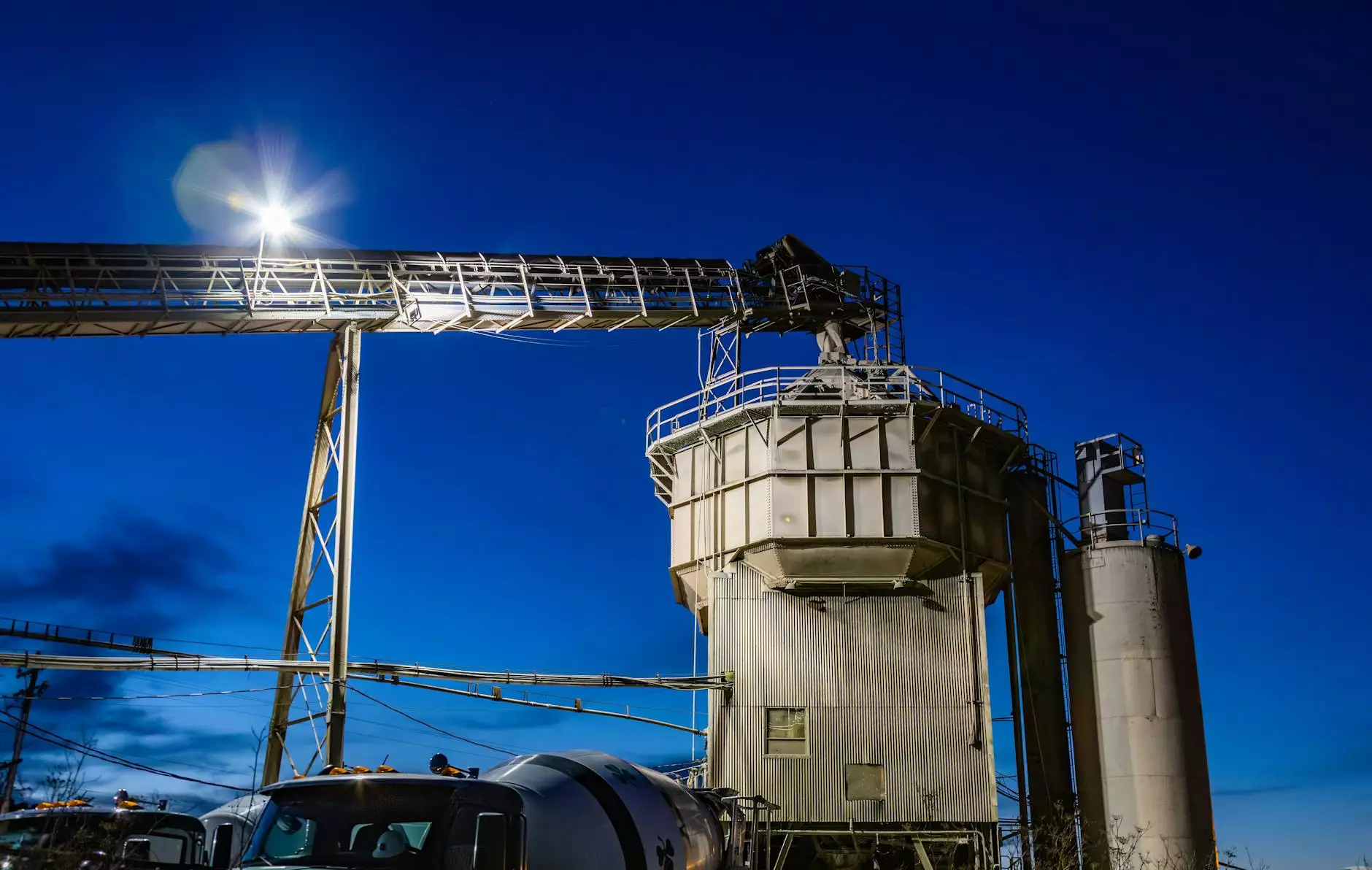Understanding Silo Temperature Monitoring

Silo temperature monitoring is an essential practice in the agricultural sector, especially for those involved in grain storage. It plays a pivotal role in ensuring that grains remain fresh, optimizing quality, and preventing spoilage. In this guide, we will delve into the intricacies of silo temperature monitoring, discussing its significance, methods, and best practices. Our aim is to provide you with a comprehensive resource that will enhance your knowledge and help your business thrive.
Why is Silo Temperature Monitoring Important?
Grain is a critical commodity in farming, and protecting its quality is vital for profitability. Here are some reasons why silo temperature monitoring is crucial:
- Preventing Spoilage: Grains are susceptible to spoilage due to high moisture levels and temperature fluctuations. Regular monitoring prevents the growth of mold and pests.
- Optimizing Quality: Maintaining optimal storage conditions helps preserve the nutritional value and quality of grains, which is essential for marketability.
- Reducing Economic Loss: Spoilage and pest infestations can lead to significant financial losses. Investing in monitoring technology can save farmers from these costly setbacks.
- Enhancing Decision Making: Accurate data allows farmers to make informed decisions regarding grain handling and storage practices.
Understanding Temperature Dynamics in Silos
Temperature distribution within a silo can vary significantly based on several factors. Understanding these dynamics is crucial for effective silo temperature monitoring:
1. Heat Generation
Grains generate heat through respiration and microbial activity. Understanding how heat is generated within silos helps farmers anticipate temperature changes. This is the primary reason why temperature must be monitored on a regular basis.
2. Moisture Levels
Moisture content directly affects the temperature of stored grains. High moisture levels can lead to increased temperatures, creating an optimal environment for spoilage and pests.
3. Environmental Conditions
External temperatures also influence silo conditions. For instance, the transition from day to night can lead to significant temperature shifts. By continuously monitoring these changes, farmers can take proactive measures to ensure optimal grain storage.
Methods of Silo Temperature Monitoring
There are various methods for monitoring silo temperatures, each with its own set of advantages. Here are some widely used techniques:
1. Manual Monitoring
Traditional methods involve using handheld thermometers, where operators manually check and record temperature readings at different points in the silo. While this method is low-cost, it can be labor-intensive and prone to human error.
2. Automated Temperature Sensors
Automated systems provide real-time data and are more efficient than manual checks. These systems typically involve:
- Temperature Sensors: Placed at various levels within the silo, they provide a comprehensive temperature profile.
- Data Logging: Collects and stores temperature data for future analysis and trend identification.
- Alarms: Alerts operators when temperature thresholds are exceeded, allowing for quick intervention.
3. Remote Monitoring Systems
Advancements in technology have led to sophisticated remote monitoring systems that enable farmers to check silo temperatures from anywhere using mobile apps or web platforms. These systems often integrate with smart farming technologies, providing a holistic view of farm operations.
Best Practices for Effective Silo Temperature Monitoring
To maximize the benefits of silo temperature monitoring, consider the following best practices:
1. Regular Calibration of Equipment
Ensure that all temperature monitoring equipment is regularly calibrated to maintain accuracy. Inaccurate readings can lead to poor decision-making and potential spoilage.
2. Establish Monitoring Protocols
Create a schedule for regular monitoring using automated systems. Include checks during peak activity periods, such as right after grain delivery or during weather changes.
3. Educate Staff
Train your staff on the importance of silo temperature monitoring and the proper handling of equipment. Well-informed employees can respond better to issues and impact the overall effectiveness of monitoring.
4. Utilize Data for Improvement
Regularly analyze monitored data to identify trends and develop strategies to enhance grain storage practices. Utilize this information to adjust moisture control and temperature management practices accordingly.
Common Challenges in Silo Temperature Monitoring
While crucial, there are challenges associated with silo temperature monitoring that farmers must navigate:
1. Equipment Malfunction
Faulty or poorly maintained equipment can lead to misleading temperature readings. Regular maintenance and troubleshooting can mitigate these issues.
2. Data Overload
Automated systems can generate large amounts of data, making it challenging to analyze effectively. Implementing data analysis software can help streamline this process.
3. Lack of Awareness
Some farmers may not recognize the importance of silo temperature monitoring. Raising awareness about its benefits can encourage better adoption of monitoring practices.
Conclusion
Silo temperature monitoring is a fundamental aspect of grain storage management that greatly affects the quality and profitability of agricultural operations. By investing in appropriate monitoring technologies and adhering to best practices, farmers can ensure their grain remains in optimal condition, reducing spoilage and maximizing returns.
At TSGC Inc., we believe in empowering farmers with the right tools and knowledge to enhance their farming practices. For more insights on farming equipment and repair services, feel free to explore our offerings.
Final Thoughts
As we embrace advanced techniques in agriculture, silo temperature monitoring will continue to evolve, playing an instrumental role in sustainable farming. Embracing these technologies not only benefits individual farmers but also contributes positively to the entire agricultural ecosystem.









